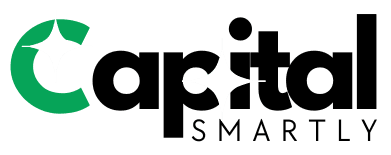advertisement
Student loan debt in the US has surpassed $1.7 trillion. This huge number shows how important it is to understand student loans. This guide will help you make smart choices about financing your education.

College costs keep rising, making student loans more common. This guide will help you manage your debt effectively. You’ll learn about federal and private loans, repayment plans, and loan forgiveness programs.
Understanding Student Loans: An Overview
Student loans help millions of students pay for college each year. They are crucial for many to pursue their educational goals. Knowing the basics of student loans helps borrowers make smart choices.
These loans allow students to invest in their future. They also help navigate the complex world of higher education financing.
What Are Student Loans?
Student loans are financial tools for covering education costs. They help pay for tuition, fees, room and board, and other expenses.
Borrowers typically repay these loans over many years. Repayment often starts after students finish school and begin working.
Types of Student Loans
- Federal Student Loans: Offered by the U.S. government, these loans come with a variety of repayment plans and borrower protections, such as income-driven repayment options and potential loan forgiveness programs.
- Private Student Loans: Provided by banks, credit unions, and other private lenders, these loans often have different terms and conditions compared to federal loans, including varying interest rates and repayment plans.
Federal vs. Private Loans
Choosing between federal and private student loans is a big decision. Federal loans usually offer better terms, like fixed interest rates.
They also provide flexible repayment options and possible loan forgiveness. Private loans may have higher rates and less flexibility.
However, private loans can help students who’ve used up their federal loan options.
“Student loans can be a powerful tool for achieving your educational goals, but it’s important to understand the different options and make informed decisions that align with your financial situation and long-term plans.”
Navigating the FAFSA Process
The FAFSA opens doors to college financial aid. It’s vital for students to grasp this process. By doing so, they can boost their chances of getting federal student aid.
This aid includes grants, loans, and work-study programs. Understanding FAFSA helps students make the most of these options.
What is FAFSA?
FAFSA is a yearly form for students and families. It’s used to apply for federal student aid. The form helps figure out how much a family can pay for college.
This amount is called the expected family contribution (EFC). The EFC helps decide how much financial aid a student can get.
Importance of Filing Early
- Filing FAFSA early boosts chances for maximum financial aid.
- States and colleges often give out aid on a first-come, first-served basis.
- Early submission ensures consideration for more aid options.
Common FAFSA Mistakes
To avoid problems, watch out for these common FAFSA errors:
- Failing to report all required income and asset information
- Providing inaccurate or incomplete personal details
- Misunderstanding dependency status and who should be included on the form
- Missing the FAFSA filing deadline
- Not updating the FAFSA if there are changes in financial circumstances
Knowing the FAFSA process helps students avoid mistakes. This knowledge can lead to better financial aid outcomes. Students can then focus on their educational goals.
| FAFSA Deadline | Potential Benefits |
|---|---|
| October 1st | Increased eligibility for need-based financial aid Access to state-specific grants and scholarships Early consideration for college/university financial aid packages |
| June 30th | Last day to submit the FAFSA for the current academic year Still eligible for federal student loans and work-study programs May miss out on some state and institutional aid opportunities |
Eligibility Criteria for Student Loans
Student loans are vital for pursuing higher education. Understanding eligibility requirements is key. Let’s explore the criteria for federal and private student loans.
Federal Student Loan Eligibility
Federal student loans, like Direct Loans, are available to many students. You must be in an eligible program at a participating school. You also need to be a U.S. citizen or eligible non-citizen.
Maintaining satisfactory academic progress is crucial. Demonstrating financial need through the FAFSA is also required.
- Be enrolled in an eligible degree or certificate program
- Maintain satisfactory academic progress
- Demonstrate financial need through the FAFSA
- Be a U.S. citizen or eligible non-citizen
Private Student Loan Criteria
Private loans come from banks, credit unions, and other financial institutions. These loans consider factors like credit score, income, and cosigner requirements.
Private loans offer more borrowing options. However, they often have less favorable terms than federal loans. They also provide limited borrower assistance.
| Criteria | Federal Student Loans | Private Student Loans |
|---|---|---|
| Credit Score | Not required | Good credit score typically required |
| Income | No income requirement | Minimum income requirement |
| Cosigner | Not required | Often required for students with limited credit history |
| Financial Need | Demonstrated financial need required | No financial need requirement |
Understanding these criteria helps you make smart choices. The loan eligibility process can vary. Explore all options and seek borrower assistance when needed.
Comparing Federal and Private Student Loans
Students have two main options for financing higher education: federal student aid and private education loans. Understanding their differences is crucial for making smart borrowing choices. Let’s explore the key aspects of each loan type.
Interest Rates
Federal student loans offer fixed interest rates that remain consistent throughout the loan’s life. Private student loans may have fixed or variable rates, which can change based on market conditions. Federal loan rates are usually lower, making them more affordable for many borrowers.
Repayment Options
Federal student loans offer various repayment plans, including income-driven options. These plans adjust monthly payments based on the borrower’s income and family size. Private loans often have less flexible repayment options, with standard fixed or graduated schedules.
Loan Limits
| Loan Type | Undergraduate Annual Limit | Graduate Annual Limit |
|---|---|---|
| Federal Student Loans | $5,500 – $12,500 | $20,500 |
| Private Student Loans | Cost of attendance – other aid | Cost of attendance – other aid |
Federal student loans have set annual and total borrowing limits. Private loans are usually capped at the cost of attendance minus other financial aid received. This allows private loans to offer higher maximum amounts, but increases the risk of over-borrowing.
Consider the pros and cons of both federal and private student loans carefully. This will help you make smart choices about financing your education. Choose the option that best fits your needs and financial situation.
Preparing for Loan Application
Applying for college financing can seem overwhelming. But with proper preparation, you can boost your chances of success. Understanding the required documents and following key tips can help you secure funding.
This guidance applies to both federal and private student loans. It will streamline the process and increase your chances of approval.
Documents Needed
To begin, gather these key documents for your loan application:
- Proof of identity (e.g., driver’s license, passport)
- Social Security number
- Proof of enrollment or acceptance to an eligible educational institution
- Financial statements (e.g., tax returns, pay stubs, bank statements)
- Information about your educational costs and expenses
Tips for a Successful Application
Beyond gathering documents, consider these tips to improve your college financing application:
- Complete the Free Application for Federal Student Aid (FAFSA) early. This maximizes your eligibility for borrower assistance and other financial aid.
- Compare interest rates and repayment terms between federal and private FAFSA loans. Find the best fit for your financial situation.
- Maintain a strong credit history and creditworthiness. This can greatly impact your loan approval and terms.
- Consider having a co-signer, especially for private loans. This can improve approval chances and potentially lower interest rates.
- Be ready to provide details about your educational expenses. Explain how you plan to use the loan funds.
Follow these guidelines and gather all necessary documentation. This approach will set you up for a successful college financing application.

Student Loan Repayment Options
Managing student loan repayment can be tricky. It’s important to understand the various repayment plans available. Exploring different options helps you find the best fit for your finances.
Standard Repayment Plan
The standard repayment plan is straightforward. Borrowers make fixed monthly payments for up to 10 years. This plan offers a predictable payment schedule.
It’s often the default choice for federal student loans. However, it may not suit everyone struggling with education debt.
Income-Driven Repayment Plans
Income-driven repayment plans offer more flexibility. These plans adjust monthly payments based on your discretionary income. This often results in lower monthly obligations.
Popular options include Income-Based Repayment (IBR), Income-Contingent Repayment (ICR), and Pay As You Earn (PAYE).
Deferment and Forbearance
Deferment and forbearance provide temporary relief during financial hardship. Deferment postpones loan payments, while forbearance reduces or suspends them. These options can give you breathing room.
It’s crucial to understand the implications and eligibility criteria before choosing these options.
Consider your financial situation and long-term goals when choosing a repayment plan. Exploring various options helps you manage your education debt effectively.
Understanding Interest Rates
Student loans and interest rates go hand in hand. These rates shape the total cost of your education debt. They greatly influence your college financing plans.
Fixed vs. Variable Rates
Student loans offer fixed or variable interest rates. Fixed rates stay the same throughout the loan. This makes budgeting easier.
Variable rates change with market conditions. This can affect your monthly payments. Each type has its pros and cons.
How Interest Accrues
Interest starts growing once funds are given out. This happens even during school and grace periods. The longer you take to repay, the more interest builds up.
Managing your student loans well requires understanding interest accrual. It’s key to keeping your balance in check.
Here’s an example of interest accrual:
“A student with a $30,000 loan at a 6% interest rate would accrue approximately $1,800 in interest during the first year of repayment, even if they make no payments during that time.”
This shows why making payments early is important. Even small payments can prevent interest from piling up.
Knowing about interest rates helps you manage college financing. You can make smart choices about your student loans. This knowledge empowers you to handle your education debt wisely.
Loan Forgiveness Programs
Student loan debt is a heavy burden for many Americans. Loan forgiveness programs offer relief to eligible borrowers. These programs can reduce or eliminate outstanding student loan balances.
Let’s explore two main loan forgiveness initiatives. They are Public Service Loan Forgiveness and Teacher Loan Forgiveness.
Public Service Loan Forgiveness
The Public Service Loan Forgiveness (PSLF) program helps public sector workers. This includes those in government agencies and non-profit organizations.
To qualify, borrowers must make 120 qualifying monthly payments. They must work full-time in an eligible public service role. After meeting requirements, the remaining federal direct loan balance can be forgiven.
Teacher Loan Forgiveness
The Teacher Loan Forgiveness program supports educators in low-income schools. It also helps those in educational service agencies. Teachers must work for five consecutive academic years.
Eligible teachers can receive up to $17,500 in loan forgiveness. This applies to federal direct or FFEL subsidized and unsubsidized loans.
These programs offer significant borrower assistance for those struggling with federal student aid repayment. Understanding these initiatives can help borrowers explore loan forgiveness options. This can lead to regaining financial stability.
“Loan forgiveness programs can be a game-changer for borrowers, offering a path to financial freedom and a brighter future.”
Managing Student Loan Debt
Education debt burdens millions of Americans. It’s vital for borrowers to understand effective strategies for managing their loans. Exploring various options can help ease the impact of education debt on your finances.
These strategies can help whether you’re just starting repayment or have been at it for years. They aim to alleviate the strain on your overall financial well-being.
Strategies for Debt Reduction
Tackling student loan debt requires a multi-pronged approach. Here are some strategies to speed up repayment and reduce interest charges:
- Prioritize high-interest loans: Focus on paying off loans with the highest interest rates first to save on long-term costs.
- Enroll in income-driven repayment plans: These plans link your monthly payments to your discretionary income, potentially reducing your burden.
- Explore borrower assistance programs: Many federal and state initiatives offer financial aid and debt relief options for eligible borrowers.
- Make additional payments whenever possible: Even small, consistent extra payments can significantly accelerate the repayment process and reduce the total interest paid.
- Refinance or consolidate loans: Depending on your credit profile and loan terms, refinancing or consolidating your loans may result in a lower interest rate and more manageable monthly payments.
Impact on Credit Score
Student loans can greatly affect your credit score, both positively and negatively. Timely repayment shows responsible financial behavior, which can boost your credit score over time.
Missed or late payments can harm your credit. Defaulting or having high debt-to-income ratios can also negatively impact your credit score.
Poor credit can make it harder to get other loans, like mortgages or auto loans. Managing your student debt well can lead to greater financial flexibility.
Resources for Student Borrowers
Navigating financial aid and student loan management can be challenging. Fortunately, many resources are available to help guide you. These include official government websites and reputable non-profit organizations.
These resources provide information and support for making informed decisions about your student loans. They can help you understand your options and rights as a borrower.
Government Websites
The Federal Student Aid website is a great starting point. It’s run by the U.S. Department of Education. This site offers detailed info on financial aid, borrower guide programs, and repayment options.
Another useful resource is the Consumer Financial Protection Bureau’s Student Loan page. It guides you through loan refinancing, debt management, and your rights as a consumer.
Non-Profit Organizations
- NerdWallet – A non-profit financial literacy organization that offers comprehensive guides, tools, and resources to help students and borrowers navigate the financial aid landscape.
- EdFinancial – A non-profit dedicated to providing borrower guide and education financing assistance, including information on student loan repayment and debt management.
- FDIC – The Federal Deposit Insurance Corporation offers a variety of resources related to student loans, financial education, and consumer protection.
These resources can help you understand your financial aid options better. You’ll be able to make smarter decisions about managing your student loans.
With this knowledge, you can find the support needed to handle your loans successfully. Don’t hesitate to use these tools to your advantage.
Future of Student Loans in the US
Student loan trends are changing in the United States. New laws and ideas are shaping how students pay for college. Let’s look at how students borrow money and what this means for education.
Trends in Borrowing
Students now owe more money than ever before. The average undergraduate has over $30,000 in debt when they graduate. This is because college costs more, wages aren’t growing, and many jobs require degrees.
The COVID-19 pandemic has made things harder. More students, both traditional and non-traditional, are taking out loans to pay for school.
Legislative Changes and Proposals
Lawmakers are trying to fix the student debt problem. They’ve suggested new ideas to help students. These include expanding loan forgiveness and increasing money for colleges.
Some want to try income-share agreements or change how students apply for aid. People are still debating the best solutions. Everyone agrees we need to make college more affordable and accessible.
FAQ
What are student loans?
Student loans help pay for college expenses. They cover tuition, fees, room, board, and other education costs. These financial products assist students and families with higher education expenses.
What are the different types of student loans?
Two main types exist: federal and private student loans. Federal loans come from the U.S. government. They offer benefits like income-driven repayment plans and loan forgiveness programs.
Private loans come from banks and financial institutions. They typically have less favorable terms and repayment options.
What is the FAFSA and why is it important?
The Free Application for Federal Student Aid (FAFSA) is crucial. It determines eligibility for federal student aid. This includes grants, loans, and work-study programs.
Filing the FAFSA early can increase chances of receiving more financial aid.
What are the eligibility criteria for federal student loans?
Borrowers must be U.S. citizens or eligible non-citizens. They need to enroll in an eligible degree program. Maintaining satisfactory academic progress is required.
Demonstrating financial need is also among the requirements.
How do federal and private student loans differ?
Federal loans have fixed interest rates and flexible repayment plans. They offer various borrower protections and forgiveness programs.
Private loans often have variable rates and limited repayment options. They typically provide fewer borrower benefits.
What documents are needed to apply for student loans?
Borrowers need their Social Security number and tax returns. Pay stubs and proof of enrollment are required. A completed FAFSA form is also necessary.
What are the different student loan repayment options?
Federal loans offer several repayment plans. These include standard repayment and income-driven options. Deferment or forbearance are also available.
These plans have varying monthly payments and repayment timelines.
How do interest rates work for student loans?
Student loans can have fixed or variable interest rates. Fixed rates stay the same throughout the loan. Variable rates can change over time.
Understanding interest accrual and compounding is crucial for managing debt.
What are some student loan forgiveness programs?
Federal programs offer loan forgiveness options. Public Service Loan Forgiveness and Teacher Loan Forgiveness are examples. These programs forgive loans after meeting specific requirements.
Working in public service or teaching roles may qualify borrowers.
How can borrowers manage their student loan debt?
Making extra payments can help manage debt. Exploring income-driven repayment plans is beneficial. Understanding how loans affect credit scores is important.
Seeking guidance from financial advisors or non-profits can be helpful.
What are some key resources for student borrowers?
StudentAid.gov offers valuable information for borrowers. The National Student Loan Data System is another helpful resource. The Consumer Financial Protection Bureau provides support and guidance.



